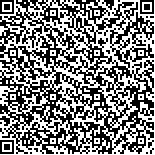下载中心
优秀审稿专家
优秀论文
相关链接
摘要

叶面积指数(LAI)是定量模拟和刻画植被冠层结构、生理过程以及研究森林生态系统碳水循环中物质和能量交换的重要生物物理参数之一。定量分析林冠元素的3维空间分布是准确估算森林叶面积指数的重要基础和关键步骤。本文利用地面激光雷达扫描系统(TLS),获取了不同树种、密度、年龄和空间分布的森林3维点云数据,利用“径向半球点云切片”和“点云法向量重建”算法分别计算森林的角度孔隙率和消光系数,进而得到森林冠层的有效叶面积指数。通过与利用传统光学仪器得到的结果比较发现:单站半球式激光雷达扫描得到森林样方尺度的结果与LAI-2200和数字半球摄影观测所得结果的相关性分别为R2=0.7084(N=9,p<0.01)和0.7409(N=14,p<0.01)。通过角度分辨率(LBA)和角度孔隙率(AGF)的敏感性分析,建议径向半球切片算法的角度分辨率应参考中心单站TLS半球式扫描所设置的采样间距。本文所采用的径向半球切片算法可以有效地利用单站半球式扫描所获取的3维点云进行森林冠层有效叶面积指数的定量估算。
Leaf Area Index (LAI) is one of the most important forest canopy biophysical parameters and plays a key role in many forest biophysical processes and energy and matter exchange among forest-soil-atmosphere. Terrestrial laser scanning (TLS)-based Point Cloud Data (PCD) implicitly contain three-dimensional forest structural information. PCD can be used to quantitatively characterize the structural information of forests from a three-dimensional perspective and provides a high spatial resolution. Consequently, PCD provides highly detailed information about forests and enable the retrieval of forest parameters. In this study, we retrieved the canopy effective leaf area index (LAIe) by using TLS and validated the TLS-based results through field-based measurements.
Three-dimensional PCD were acquired with a single- or multiple-location experimental setup in all forest plots. All PCD were clipped into a circular plot with a radius of 30 m. An algorithm called "radial hemispherical point cloud slicing (RHPCS)" was utilized to process the original PCD to retrieve the "Angular Gap Fraction (AGF)" and extinction coefficients by dividing the hemispherical volume into many "trapezoid voxels." A "gap" voxel is an empty or a foliage voxel depending on the number of points within it. By reconstructing the normal vector of a point within a certain neighbor region, we computed the leaf mean inclination angle and obtained the canopy extinction coefficient by using Campbell's algorithm. We calculated the LAIe of each forest plot on the basis of Beer's law by dividing a hemisphere PCD into 9° intervals in the inclination direction. Ten annulus hemispherical regions were obtained. Each region had an azimuthal angle ranging from 0° to 360° and a 9° inclination angle range. Then, we computed the AGF, extinction coefficient, and LAIe of each hemispherical region. We obtain the LAIe of the entire plot by computing the means of the LAIe of 10 hemispherical regions.
Results showed that the TLS-based LAIe captured 70.84% (N=9, p<0.01) and 74.09% (N=14, p<0.01) of the variations in LAI-2200 and Digital Hemispherical Plotography (DHP), respectively. We conducted a sensitivity analysis of laser beam angle in AGF estimation and discovered that the AGF of RHPCS should be determined based on a user-predefined laser sampling space and is affected by the characteristic size of foliage elements of a forest canopy. We also analyzed the effect of the number of neighboring points on LAIe calculation. The optimal number of neighboring points was 12 in this study, and we suggest that the number of neighboring points be based on leaf curvature when reconstructing a normal vector.
Comparison of TLS-based LAIe with the LAIe results of LAI-2200 and DHP showed that calculating the LAIe of forest plots by combining TLS-based PCD with the RHPCS algorithm is feasible and suitable for forests with different densities and ages. The TLS-based LAIe estimation approach presents considerable importance in quantitatively characterizing forest canopy structural parameters from a 3D perspective.

